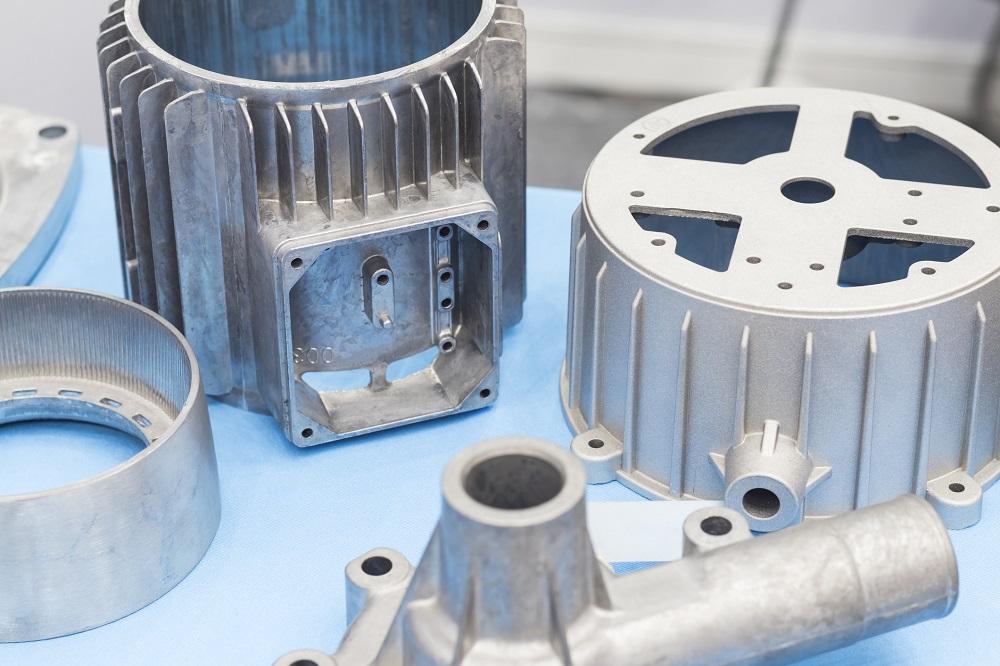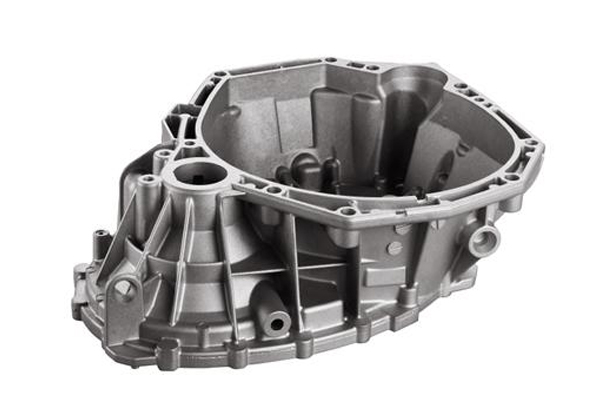Ways a professional foundry ensures quality and consistency in every product
Comprehending the Procedures Involved in Aluminum Casting for High-Quality Production
The aluminum casting process is a facility yet important procedure for accomplishing high-grade manufacturing. It includes numerous stages, including mold prep work, melting, pouring, and cooling. Each step requires cautious interest to information to avoid defects and guarantee consistency. Comprehending these treatments can substantially affect the final product's stability. As one checks out the subtleties of mold and mildew choice and air conditioning strategies, the significance of each facet comes to be increasingly clear. What aspects genuinely dictate success in this complex process?

The Aluminum Casting Process Overview
The aluminum casting procedure is a widely made use of manufacturing method that changes liquified aluminum into different shapes and elements. This procedure begins by warming aluminum till it gets to a liquid state, allowing it to move quickly right into molds. Depending on the wanted final result, various casting techniques can be employed, including sand casting, die casting, and financial investment casting. Each technique has its unique advantages and applications, influencing factors such as manufacturing volume, dimensional accuracy, and surface area finish.
Once the aluminum is poured into the mold and mildew, it cools and strengthens, taking on the form of the cavity. After cooling, the actors piece is eliminated from the mold, often requiring extra processes like trimming, machining, or surface therapy to achieve the last specifications. Generally, the aluminum casting process is essential in generating resilient and complex elements for various industries, consisting of auto, aerospace, and consumer goods.
Preparing the Mold for Casting

Cautious prep work also involves cleaning up the mold to get rid of any kind of pollutants that can affect the casting process. A detailed examination assurances that all parts fit together effectively, stopping imbalances during pouring. In addition, using a launch agent can assist alleviate the removal of the completed item.
Eventually, meticulous interest to detail during mold prep work establishes the foundation for a successful casting operation, influencing elements such as dimensional accuracy and surface area high quality of the aluminum components created.
Pouring and thawing Aluminum
Efficient melting and pouring of aluminum is critical for accomplishing high-grade castings. The process starts by picking the suitable heater, which must offer efficient warmth transfer and preserve regular temperatures. Different kinds of heating systems, such as induction or crucible heating systems, can be made use of based on manufacturing requirements and volume.
The aluminum needs to be heated up to its melting factor, usually around 660 levels Celsius (1220 degrees Fahrenheit), while making certain very little oxidation and contamination. To improve high quality, additives might be presented to boost fluidness and lower impurities. When fully melted, the aluminum ought to be held at a steady temperature level before putting.
Pouring needs accuracy to prevent flaws such as air pockets or inclusions. Using pouring ladles and regulated putting methods adds to a smooth circulation right into the mold and mildew. Proper implementation of these actions is vital for creating castings with maximum structural honesty and surface area finish.
Cooling and Solidification Techniques
After putting, the cooling and solidification of aluminum play an important duty in figuring out the last residential properties of the casting (Precision aluminum casting). Reliable cooling methods directly influence the microstructure, mechanical residential properties, and dimensional precision of the end product. Common methods consist of compelled air cooling and water spray, which advertise uniform temperature level distribution and lessen thermal slopes
The solidification process begins as the molten aluminum sheds warmth, moving from liquid to solid. The price of cooling affects grain size; slower air conditioning can lead to bigger grains, possibly minimizing toughness. Additionally, making use of chills-- steel inserts that absorb heat-- can enhance cooling rates in specific areas, enhancing overall integrity.
Controlled cooling down systems are commonly executed to achieve desired residential properties, such as boosted ductility or toughness, by managing the air conditioning contour. Proper techniques guarantee trusted aluminum castings that meet rigid sector requirements.
Ending Up and High Quality Control Steps
Completing and quality assurance measures are necessary to ensure that aluminum castings meet the required specifications and efficiency requirements. After the casting procedure, components undergo various ending up procedures, including machining, grinding, and polishing. These processes enhance surface area high quality, dimensional accuracy, and general appearances.
Quality control procedures play an essential role in guaranteeing item honesty. Evaluation methods such as aesthetic assessments, dimensional checks, and non-destructive testing are utilized to determine problems like porosity, surface irregularities, or dimensional mistakes. In addition, thorough paperwork of each stage of manufacturing aids trace any problems back to their source, making it possible for constant renovation.
Employing statistical procedure control (copyright) further assurances that production procedures remain within defined limits, boosting consistency and reliability. By integrating completing techniques and rigid top quality control procedures, manufacturers can you could try this out attain premium aluminum spreadings that fulfill both industry requirements and customer assumptions.
Frequently Asked Inquiries
What Sorts Of Aluminum Alloys Are Ideal for Casting?
The best aluminum alloys Check This Out for casting consist of 319, 356, and 413, understood for their exceptional fluidness, deterioration resistance, and strength - Aluminum Foundry. These alloys are frequently used in automotive, aerospace, and numerous industrial applications for resilient elements
Just How Does Temperature Level Affect Aluminum Casting High Quality?
Temperature substantially affects aluminum casting high quality; greater temperatures can enhance fluidness however might result in oxidation, while lower temperatures improve detail yet rise viscosity. Accomplishing suitable temperatures is important for stabilizing these opposite results during casting.
What Prevail Flaws in Aluminum Castings?
Common problems in aluminum spreadings include porosity, contraction, incorporations, chilly shuts, and surface area roughness. These concerns develop from variables such as improper temperature control, contamination, and inadequate mold and mildew style, affecting the last product's integrity and efficiency.
Can Aluminum Casting Be Recycled?

How Does Aluminum Casting Compare to Various Other Manufacturing Methods?
Aluminum casting deals premium style versatility and product efficiency compared to approaches like forging or machining. Aluminum Foundry. Its ability to produce intricate forms lowers waste, enhancing total manufacturing performance while preserving top quality criteria in ended up items
The aluminum casting process is a complex yet crucial treatment for attaining click for more info high-quality manufacturing. The aluminum casting process is a widely used production strategy that changes molten aluminum into different forms and parts. Preparing the mold for casting is a crucial step that directly impacts the quality of the final aluminum product. Finishing and top quality control measures are essential to ensure that aluminum castings satisfy the required requirements and performance requirements. Temperature substantially influences aluminum casting high quality; greater temperature levels can boost fluidness yet may lead to oxidation, while reduced temperature levels improve information however rise thickness.